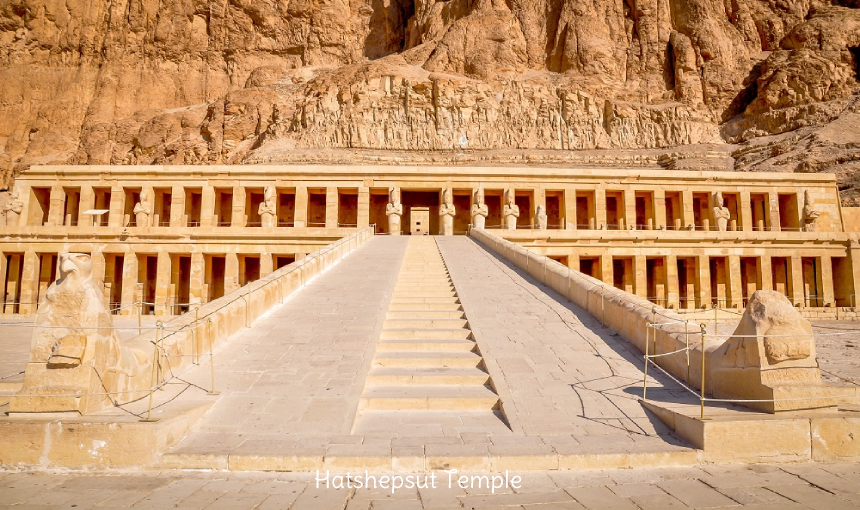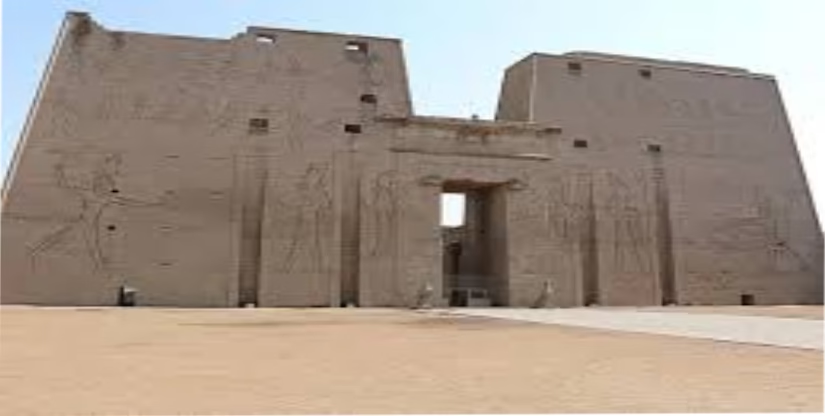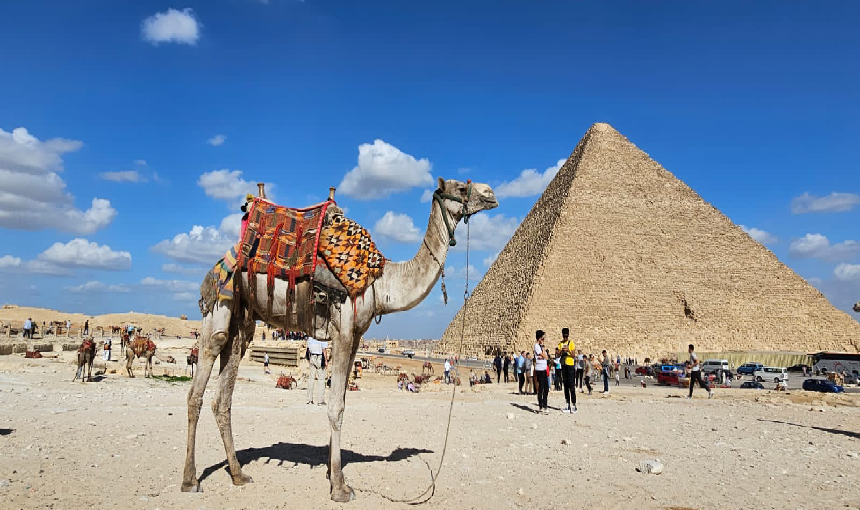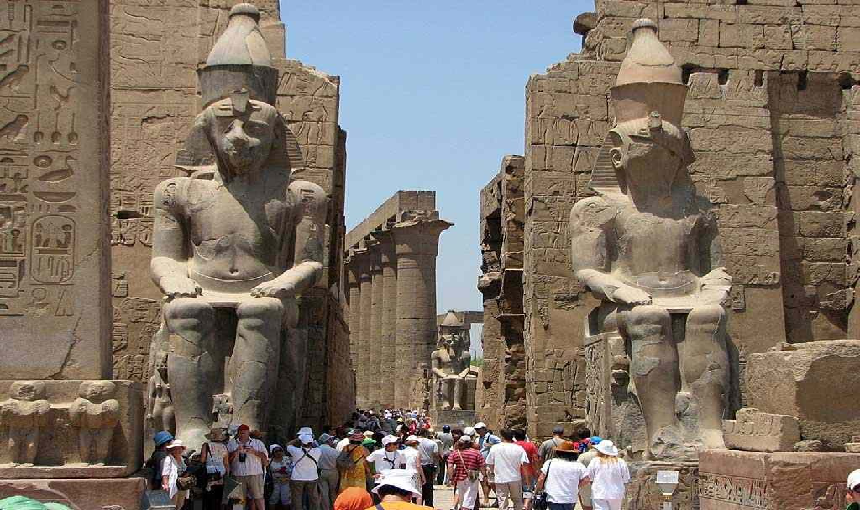The Hatshepsut Temple, also known as Djeser-Djeseru, meaning “Holy of Holies,” stands majestically at the base of the cliffs in Deir el-Bahari on the west bank of the Nile near Luxor. This architectural wonder was commissioned by Queen Hatshepsut, Egypt’s longest-reigning female pharaoh, during the 18th Dynasty. Her reign marked a period of peace, prosperity, and monumental construction, with this temple being one of her most significant achievements.
A Unique Architectural Marvel
Unlike other temples in Egypt, the design of Hatshepsut’s Temple is strikingly different. It features terraces, colonnades, and a grand staircase that harmonizes with the rugged cliffs of the surrounding mountains. The temple was not only a place of worship. But also a means for Queen Hatshepsut to legitimize her reign as pharaoh.
The architectural plan was designed by Senenmut, the queen’s chief architect and advisor, and consists of three layered terraces connected by long ramps. These terraces rise up to 30 meters and were once adorned with lush gardens, trees, and exotic plants brought back from Hatshepsut’s expeditions to the land of Punt. Making the temple a vivid display of Egypt’s wealth and power.
The Historical Significance of Hatshepsut Temple
Hatshepsut, one of the most successful pharaohs, used her temple to showcase her divine right to rule Egypt. She portrayed herself as the daughter of the god Amun-Ra, emphasizing her legitimacy as the ruler in an era when female pharaohs were rare. Hieroglyphs and reliefs depicting Hatshepsut’s life, including her famed expedition to Punt, cover the temple’s walls. Punt, a region rich in myrrh, frankincense, and gold, is believed to be located along the Red Sea.
One of the most iconic reliefs at the temple portrays Hatshepsut’s divine birth. In the scene, Amun-Ra takes on the appearance of her father to conceive Hatshepsut, further emphasizing her claim to the throne. These stories immortalized in stone not only glorify her reign but also cement her legacy in Egyptian history.
Restoration and Preservation
Hatshepsut’s Temple suffered damage over time, with parts of it being intentionally defaced by her stepson and successor, Thutmose III. Who sought to erase her legacy. Modern restoration efforts have since uncovered and preserved many of the temple’s incredible reliefs and statues. The Polish Academy of Sciences has been leading the restoration efforts. Ensuring that the temple continues to inspire awe for future generations.
What to Expect When Visiting Hatshepsut Temple
A visit to Hatshepsut Temple is a step back in time. As you ascend the long ramps and explore the grand terraces, you can imagine the splendor of the temple in its prime. You’ll walk through colonnades lined with statues of Hatshepsut, many of which depict her in male pharaonic attire. Reflecting the complex ways she portrayed herself as a ruler.
Inside the temple, you will find intricately carved reliefs that tell the stories of her reign, her divine origins, and her achievements. The Punt Expedition reliefs stand out for their vivid depictions of ships, exotic animals, and treasures. The temple is not only a testament to Hatshepsut’s power but also a monument to the skill and artistry of ancient Egyptian architects and craftsmen.
The surrounding area also offers visitors breathtaking views of the Theban Necropolis and the Valley of the Kings. Making it a must-see destination on any Nile cruise.
Check the Best Nile Cruises:
- Standard 5 Stars Nile Cruise.
- Deluxe 5 Stars Nile Cruise.
- Luxury 5 Stars Nile Cruise.
- Ultra Luxury 5 Stars Nile Cruise.
- Lake Nasser Nile Cruise.
- Dahabyia Nile Cruise.
- Felucca Adventure Nile Cruise.
- Cairo Dinner Cruise.
Why Hatshepsut’s Temple Should Be on Your Egypt Travel List
Hatshepsut’s Temple stands as a symbol of female power, resilience, and architectural brilliance. Its unique design and historical significance make it one of the most iconic sites in Egypt. Whether ancient Egyptian history, architecture, or the life of Queen Hatshepsut captivates you, this temple offers a wealth of stories for you to uncover.
Exploring the temple on a Nile cruise provides a comprehensive journey through Egypt’s most captivating ancient sites. From the serene river setting to the towering cliffs behind the temple, the site creates a perfect fusion of natural beauty and human achievement. Don’t miss out on experiencing this wonder firsthand.
Ready to explore the wonders of ancient Egypt? Book your Nile cruise now and experience the awe-inspiring beauty of Hatshepsut Temple in Luxor. Embark on a journey through history, where every step unveils the legacy of one of Egypt’s greatest female pharaohs. Let us help you make your dream trip a reality!
Follow us on Facebook, Instagram, Pinterest and X.
Don't miss checking our other Egypt Nile Cruises




